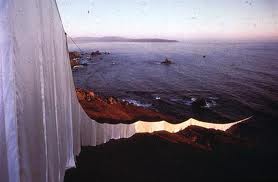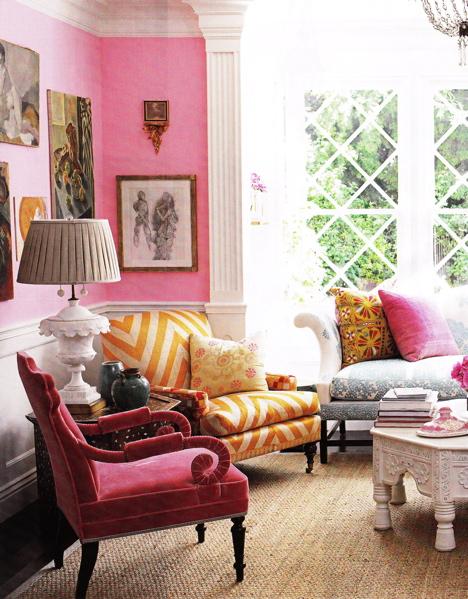VISUAL TREATS presents ' ART OUTSIDE WALLS ' / CHRISTO (and Jeanne-Claude) Day 2
 |
| imagecourtesycalitreviewcom |
Peeps,
Any discussion of artists who exhibit outside the confines of gallery walls, or are bound by the conventions of wooden frame, material limitations, or the whims of dealer or market, would be incomplete without the inclusion of Christo (and Jeanne-Claude), the celebrated team responsible for large-scale installations running through mountains and fields into the sea, or wrapping public spaces into objects of extraordinary beauty, clearly intended for all to enjoy, as well as to gently challenge the public's definition of art.
Christo and Jeanne-Claude were a married couple (until Jeanne-Claudes' death in 2009) who created environmental works of art, such as the wrapping the Reichstag in Berlin, and the Pont-Neuf bridge in Paris, 'Running Fence' in California, and 'The Gates' in New York City's Central Park. Art dealer Nancy Doyle writes that, 'the pair creates environmental works that span great distances in populated landscapes, both rural and urban. They are mostly made of fabric, created in the form of a large curtain, wrapped forms (buildings, coastline, a bridge), surrounded islands, large umbrellas, and other forms. They pay all expenses associated with the artworks, including planning, construction, and taking down, partly from the sales of Christo's preliminary drawings, early works from the 1950's and 1960's, and lithographs. They accept no contributions, grants or other financial assistance, preferring to make their aesthetic decisions apart from any influence financial backing may involve . . . Their work is very expressive, of romanticism, whimsy, poetry, and like much of contemporary art, is more experiential perhaps than viewing art in a museum (passively) can sometimes be.'
On the nature of their work, Christo states, " . . . I should repeat that our projects are not works of painting or sculpture but have elements of urbanism and architecture. Also, the temporal character of the project is an aesthetic decision. I and Jeanne-Claude would like our projects to challenge and question the people's notion of art. The temporal character of the project challenges the immortality of art. Is art immortal? Is art forever? It is a kind of naivete and arrogance to think that this thing stays forever, for eternity. It probably takes greater courage to go away than to stay. All these projects have this strong dimension of missing, of self-effacement, that they will go away, like our childhood, our life . . When they are there for 14 days, they create an urgency and sympathy because they are going to go away, they will disappear. All this is translated into a nomadic quality, like the tribes in the Sahara and Tibet. It is translated by the biggest amount of material in this project . . The cloth is the principal element to translate the vulnerability, the temporariness, and the fragility of the work, very much like a nomadic tribe that moves through the desert.
. . . immortality is linked with a very essential part of this project. All these projects are about freedom. They happen not because some president of the country liked them, some minister of culture, or some corporate executive or some major of a city; these projects happened because the artist liked to have them and, of course, they have this incredible proportion and presence. Nobody can own this project, nobody can buy the project, nobody can posses the project, or charge tickets. This project is a demonstration of freedom. A demonstration of absolute freedom and total irrationality. The world can live without 'Umbrellas,' without 'Valley Curtain' or 'Running Fence.' They have no other reason to be there except poetical creativity, total creativity. That freedom is the most important part of this project and this is why they cannot stay, because freedom is the enemy of possession and possession is equal to permanence . . . "
Please enjoy today's visual treat, and be sure to visit their online site for more biographical details, a full survey of all his projects, detailed interviews, and wonderful photographs of completed (and planned) installations.
Thanks,
Shane
Please enjoy today's visual treat, and be sure to visit their online site for more biographical details, a full survey of all his projects, detailed interviews, and wonderful photographs of completed (and planned) installations.
Thanks,
Shane



Comments